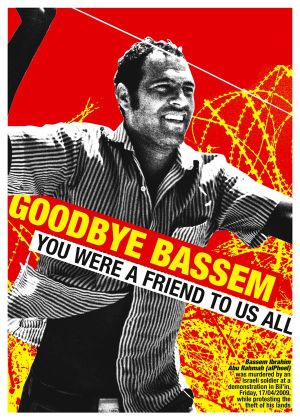Tag: Demonstration
-
Activists demonstrate and work land, despite Israeli military harrasment
24 April 2011 | Palestine Solidarity Project On Saturday, April 23, eight Israeli activists and 24 international volunteers joined residents of Beit Ommar for an action near Karmei Tsur organized by the Beit Ommar National Committee Against the Wall and Settlements. The international contingent included volunteers from the Palestine Solidarity Project and International Solidarity Movement,…
-
Military court orders Nabi Saleh protest organizer, Bassem Tamimi, remanded until end of legal proceedings
17 April 2011 | Popular Struggle Coordination Committee Bassem Tamimi’s political arrest was extended indefinitely by an Israeli military judge today despite problematic evidence. His trial will open on May 8th. The arrest of Bassem Tamimi, a 44 year-old protest organizer from Nabi Saleh and the coordinator of the village’s popular committee, was extended indefinitely…
-
Remembering Bassem Abu Rahma
17 April 2010 | Anarchists Against the Wall On April 17th we mark one year to losing Bassem, who we also knew as Pheel. Although he is greatly missed at the village and during every demonstration, his spirit keeps on living with each and every one of us. For this anniversary we decided to share…

